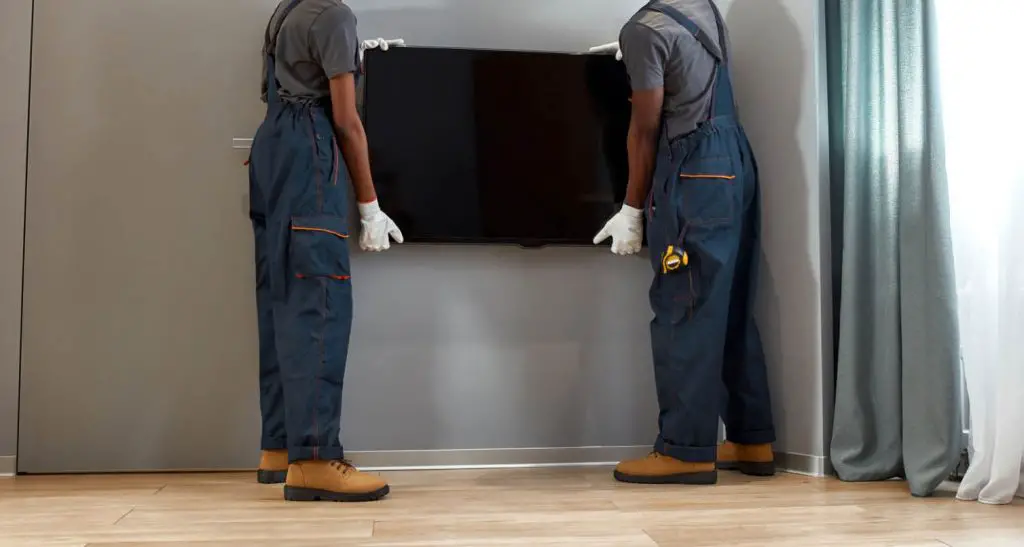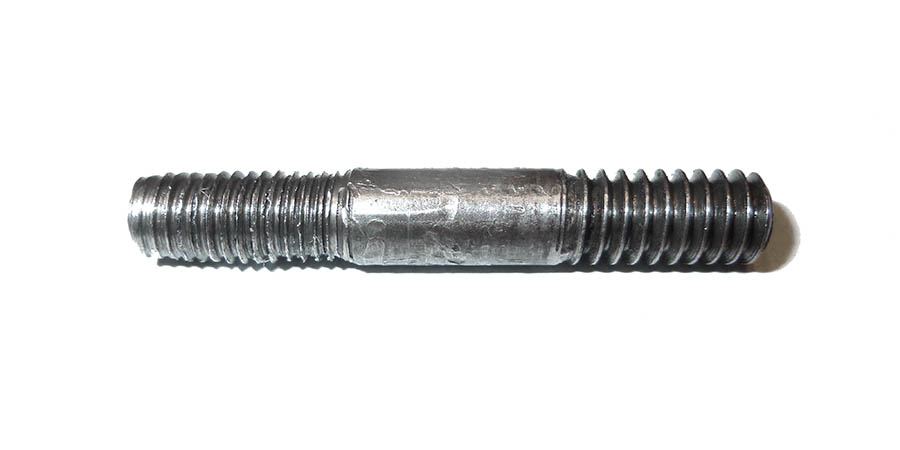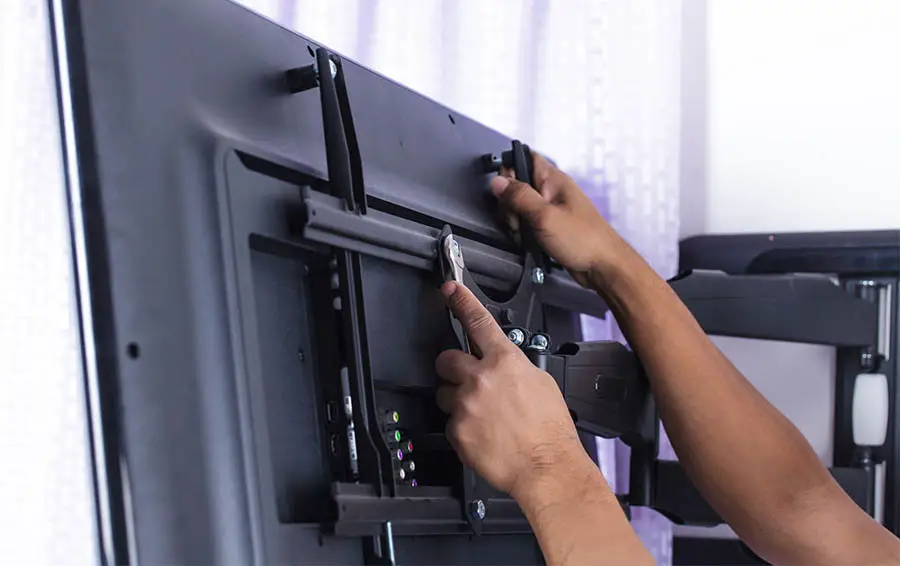Nothing is easy until you know how to do it. In the same vein mount a TV on a wall without studs is not so hard if you learn perfect.
A wall is certainly a safe place to mount a TV. Installing a TV mounting bracket is so simple and it won’t take too long if you have the right tools. You just need to locate the studs on the wall, drill some holes and tighten some screws to get the job done. However, things could get complicated if there are no studs.
The use of studs on wall construction is relatively recent. However it all started when lightweight materials such as plasterboard and cement board became popular. So, if you live in an old house, you may not find studs inside your walls. And installing the mounting bracket directly onto the wall surface isn’t a good idea.
So, what can you do in these cases? The answer is simple: reinforce your walls. In this article you’ll learn how to mount a TV on a wall without studs in simple and easy to understand steps.

What is Stud?
A stud is a structural element that provides support to the external panels that cover a wall. Plasterboards and cement boards are attached to them by nails or screws.
Commonly, studs are made of hardwood or aluminum. They’re usually placed in vertical position, separated 12, 16 or 24 inches between each other. Each stud is attached to a bottom plate and a top plate. On Canada and United States, most common studs are 2X4-inch and 2X6-inch wooden boards.

Hardwood isn’t precisely the most resistant material to fire and high humidity levels. Therefore, when using wooden studs, it’s convenient to install insulation panels between them.
Best insulation material in these cases is fiberglass. It prevents heat from entering during hot summers or escaping during cold winters. Also, fiberglass acts as a fire retardant, preventing fire to quickly spread.
Studs also work as secondary supports, so the posts don’t receive the whole load. When used on external walls, they act as load-bearing elements. So, part of the weight of the structure rests on them.
However, when used on internal walls, the only load they carry comes from the wall covering. They also hold door frames, windows and TVs in place.
Hardwood studs need to be completely dry and protected against moisture. In contact with water, wood tends to degrade, generating bad odors and mold. Humid wood also tends to twist and shrink when drying out. When this happens, the wall may deform.
On the other hand, aluminum studs are mostly used for building partition walls. Aluminum studs are lightweight and resistant to rust and high temperatures. However, they may deform so easily with high loads. Commonly, they come in the shape of C-profiles.
Step by Step Guide to Mount a TV on the Wall without Studs
If you install a TV on a wall without studs, there’s a high risk of a possible disaster. The weight of the TV could tear down the wall coating so easily. However, there’s a way to better distribute the weight on the wall to prevent this.

Below, you’ll find a step-by-step guide of how to do it.
Determine the Weight
First of all, you must determine the weight of your TV. So, you can use a weighing scale for this purpose. Also, you may find the weight on the user manual or the official website of the product. Once you know the weight, search on the Internet the maximum load that your walls can withstand.
When you can continue
If the wall material can support the weight, you can continue. Then, choose the right place to install your TV. Maybe in the center or a corner of your bedroom. Also, make sure that the TV center is located 55-56 inches above the ground.
Hold the TV
After that, hold the TV mounting bracket on the desired position and mark its contour with a pencil. Also, make sure the mounting bracket is perfectly horizontal with a bubble level.
Drill a Pilot Hole
Drill a pilot hole to ensure the drill bit penetrates the wall without trouble.
Cut a Plywood
Cut a plywood rectangle wide enough to hold the mounting bracket. Then, hold the plywood piece on the desired area of the wall. After that, drill several holes, perforating the plywood and the wall deep enough to install some toggle bolts.
Install the toggle
Now install the toggle bolts. Then, tighten the screws to set the plywood in place.
Horizontal Level
Hold the TV mounting bracket on the plywood board. Verify that it’s perfectly horizontal with a bubble level. Then, set each screw on the corresponding hole. You can use a drill or a screwdriver for this purpose.
Mounting Clip
Install the mounting clip behind the TV following the instructions on the user manual.
Clip Hooks
Set the TV in place, so the clip hooks on the mounting bracket. If the TV is too heavy, ask someone else to help you install it. Then, step back and verify the position of the TV. Make any adjustment if needed. Then, install the setting screws.
Hanging Cables
Hide the hanging cables behind the TV. If there are too many wires, use a rubber gasket to keep them grouped together. But, if the wall is completely hollow, you can drill a hole to hide the cables behind.
Conclusion
As you can see, you can easily install a TV on your walls even if there aren’t studs. But, before beginning the installation process, check the resistance of the wall. So, verify on the Internet the maximum load you can apply depending on the type of material.
It’s recommended to ask someone else’s help if the TV is too big and heavy. Also, make sure you have all the necessary materials and tools before getting started. In this case you’ll need measuring tape, drill and drill bits, screwdriver, screws and a pencil.
You may also need protective equipment like face mask, protecting glasses and work gloves to prevent accidents. If you follow each of the tips on this article, you’ll certainly get the job done without trouble.
You can learn more how to find ceiling studs.

